Inji chai is a creamy Indian ginger tea that has a soothing back-of-the-throat spice for a warming morning drink with just enough caffeine to wake you up. This recipe uses fresh ginger for a deep herbal ginger taste that really shines through in the recipe.
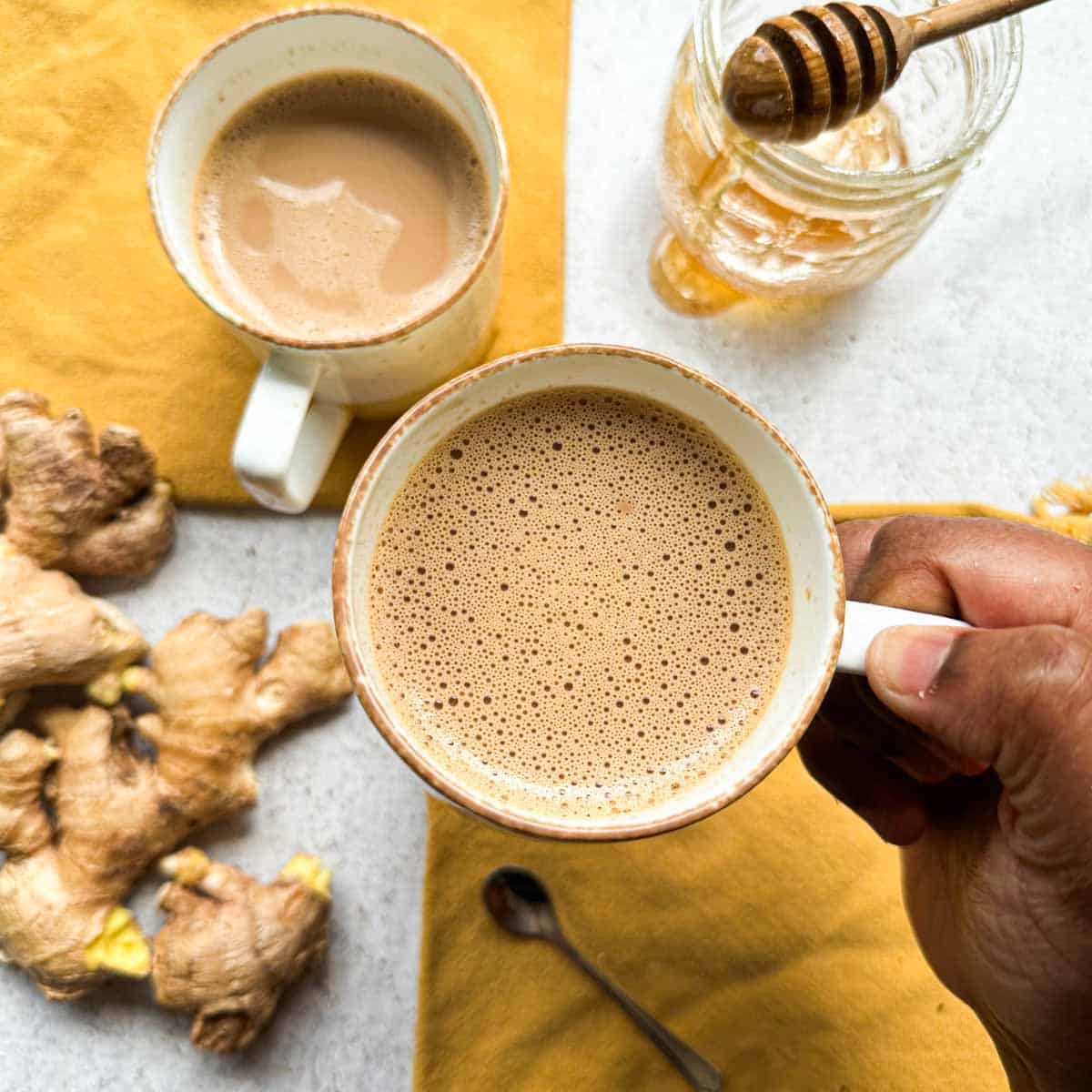
Jump to:
- Fresh ginger vs. ginger powder for ginger chai
- Substituting ginger powder with fresh ginger
- Why did my ginger chai curdle?
- Ginger chai vs. other chais
- Best tea to use for chai
- Alternative sweeteners for chai
- Snacks that pair well with ginger chai
- Frequently Asked Questions
- Inji Chai (Indian Ginger Tea)
- Other posts like this you may like
The word inji means ginger in Tamil and chai is a creamy and spiced Indian tea that is made with black CTC tea, so inji chai is one that really features the spice ginger. As a result this chai has a back-of-the-throat spice which is the perfect warm drink when you have a sore throat.
Fresh ginger vs. ginger powder for ginger chai

Fresh ginger has a very herbal, bright, and peppery ginger flavor compared to ginger powder, which has a more earthy and spicier ginger taste.
When it comes to making ginger chai, I really want to feature this one spice in all its glory so I prefer using fresh ginger compared to ginger powder. It creates a ginger chai that is more nuanced with fresh, light, and spicy flavors whereas using powdered ginger mostly adds the back-of-the-throat heat without the other complex flavors.
However, when making masala chai, I make a masala chai spice blend where I prefer using ginger powder because it can stand up to the other spices in the mix and the dry ginger powder helps create a shelf stable spice blend.
Substituting ginger powder with fresh ginger
Ginger powder is much more potent and spicy than fresh ginger. For every tablespoon of fresh ginger, substitute with ½ teaspoon of ginger powder. You can always taste your chai and decide if you want to add more ginger powder but you can't easily take it away. Remember that if you add too much ginger powder, the chai can become grainy in texture from the powder.
Why did my ginger chai curdle?
Fresh ginger has an enzyme called zingibain which can cause milk to curdle. However, that enzyme denatures at temperatures above 60°C or 140°F. So if your chai curdled, it means that you added your fresh ginger to the milk before it reached 140°F.
Add ginger to hot water to prevent chai from curdling
In order to prevent your chai from curdling, I recommend adding the fresh ginger in the beginning step of chai when you bring the water to a rolling boil and add black tea. The temperature of the water at a rolling boil will be 100°C / 212°F which is a high enough temperature (> 140°F) to denature the curdling enzyme, zingibain, and thus eliminate the chance that the chai will curdle.
Do not add fresh ginger when adding cold milk to the chai because the curdling enzyme will still be active in these low temperatures. If you forgot to add fresh ginger into the water as it was boiling, you can either bring the milk to a simmer before adding the ginger or substitute ginger powder in your chai instead.
Ginger chai vs. other chais
- Ginger chai features one spice whereas masala chai is made up of many spices.
- Ginger chai uses fresh ginger (although some recipes do use ginger powder) whereas masala chai uses a chai spice blend to flavor the drink.
- Ginger chai is spicier than more floral and delicate chais like cardamom chai or rose chai.
Best tea to use for chai
The best tea to use for chai is loose leaf CTC black tea. CTC, which stands for "crush, tear, curl", is a machine-processed tea. This tea is defined by its small granule texture and strong taste.
You can learn more about CTC tea, why it is the best tea for chai, and its substitutes in this in-depth blog post about black CTC tea.
If you don't have time to read that blog post, don't worry - here are my recommendations for black tea for your ginger chai. I like Red Label or Diaspora Co's CTC black tea to make my chai!
 Buy Now →
Buy Now → 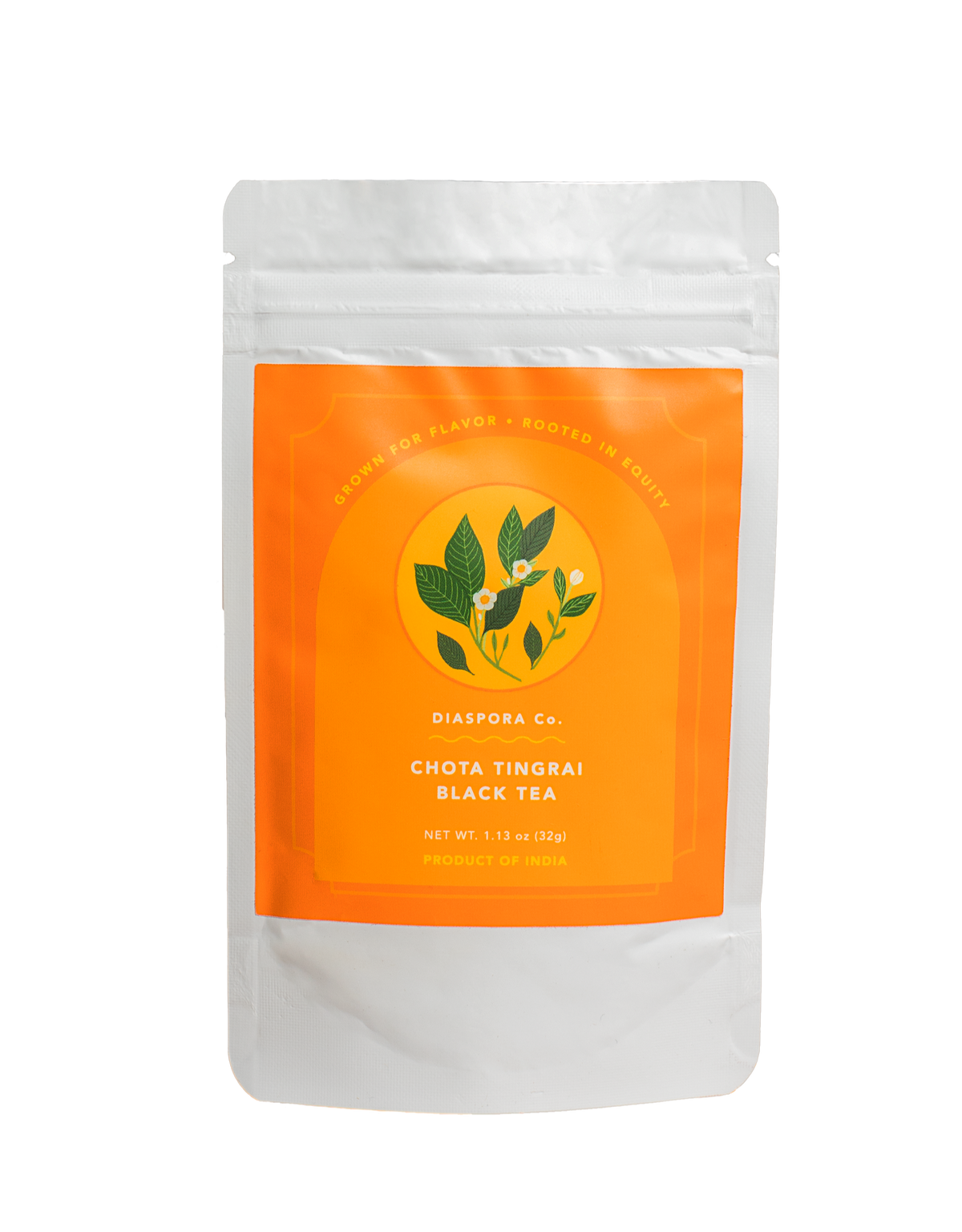 Buy Now →
Buy Now → Alternative sweeteners for chai
This recipe calls for white granulated sugar because that is what I grew up drinking. However, you can use so many different alternative sweeteners for chai. Here are my recommendations and how they will affect the taste of your ginger chai:
- Honey - Ginger and honey are a match made in heaven
- Jaggery - An unrefined sugar that adds a deep molasses flavor
- Brown Sugar - In between jaggery and white granulated sugar in taste
- Maple Syrup - Slightly caramel-y taste that is a bit sweeter than honey
Snacks that pair well with ginger chai
Drinking chai in the afternoon or throwing a chai party requires some snacks to accompany it.
My two favorite snacks to pair with ginger chai are my chai sugar cookies and caramelized onion puff pastry swirls.
The chai cookies, which have chai spices baked in, are something sweet that you can dip into your chai and make for a delicious sweet treat. The caramelized masala onion puffs use store-bought puff pastry sheets and pantry staples for a delicious savory accompaniment.
Frequently Asked Questions
Loose Leaf CTC black tea or crush, tear, curl black tea is best for chai as it provides a strong tea flavor that can stand up to the spices in chai. Red Label black CTC tea is a brand I recommend.
Chai inherently is a creamy drink that is brewed with milk and spices. If you avoid milk because you are lactose intolerant, you can substitute lactose-free milk. Other alternative milks that are great in chai are oat milk and almond milk!
You can swap out CTC black tea, which is traditionally used in chai, for rooibos, which is a decaffeinated tea, to make a chai without caffeine. You can learn more about decaf chai in this post along with the recipe.
Follow the recipe below for chai but slightly reduce the amount of water to account for the ice that will dilute the chai later. Chai can be made up to a week in advance, filtered, and stored in the fridge until ready to be consumed.
You can simply drink chai without sugar for a sugar-free chai. Alternatively, you can use unrefined sugar like jaggery or honey to sweeten chai.
Chai is served for breakfast as well as around tea time which is anywhere between 3:30pm to 5pm. But really, chai can be had at anytime of day. If you are sensitive to caffeine either avoid chai late at night or substitute black tea with rooibos for a decaffeinated option.
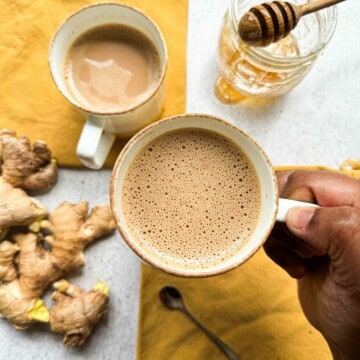
Inji Chai (Indian Ginger Tea)
Product Reccs
Ingredients
- 2 inches ginger root
- 1 ½ cup water
- 1 tablespoon loose leaf black CTC tea
- 2 tablespoons sugar plus more to taste
- 1 ½ cups whole milk
Instructions
- Using a mortar and pestle, crush 2 inches ginger root into a coarse paste. It is ok to have the skin of the ginger intact as it will be filtered out at the end of making chai. This should yield at least 2 tightly packed tablespoons of freshly crushed ginger.
- Bring 1 ½ cup water to a boil in a small saucepan on medium-high heat. Add crushed ginger, 1 tablespoon loose leaf black CTC tea, and 2 tablespoons sugar; allow the spices and tea to steep together for 2-3 minutes.
- Reduce the heat to medium-low. Add 1 ½ cups whole milk and stir. Allow the milk to boil, foam, and rise, which should take 5-7 minutes. Once it starts to rise, turn off the heat. It is important to keep a close eye on the pot, or the milk may overflow.
- Using a tea strainer, pour tea into cups, making sure to divide equally. Add more sugar to taste.
Notes and Tips
- It is important to add ginger in step 2 with the water. Adding the ginger in with the milk will cause the milk to curdle. Read here for more info on why this is important.


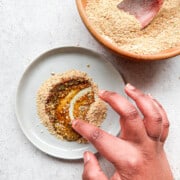
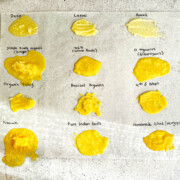
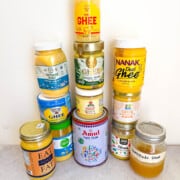
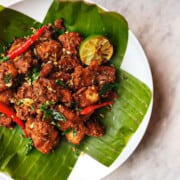

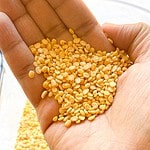
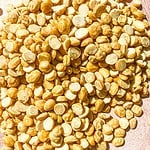
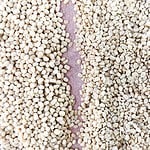
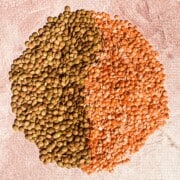

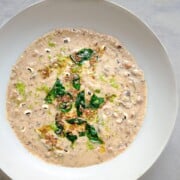
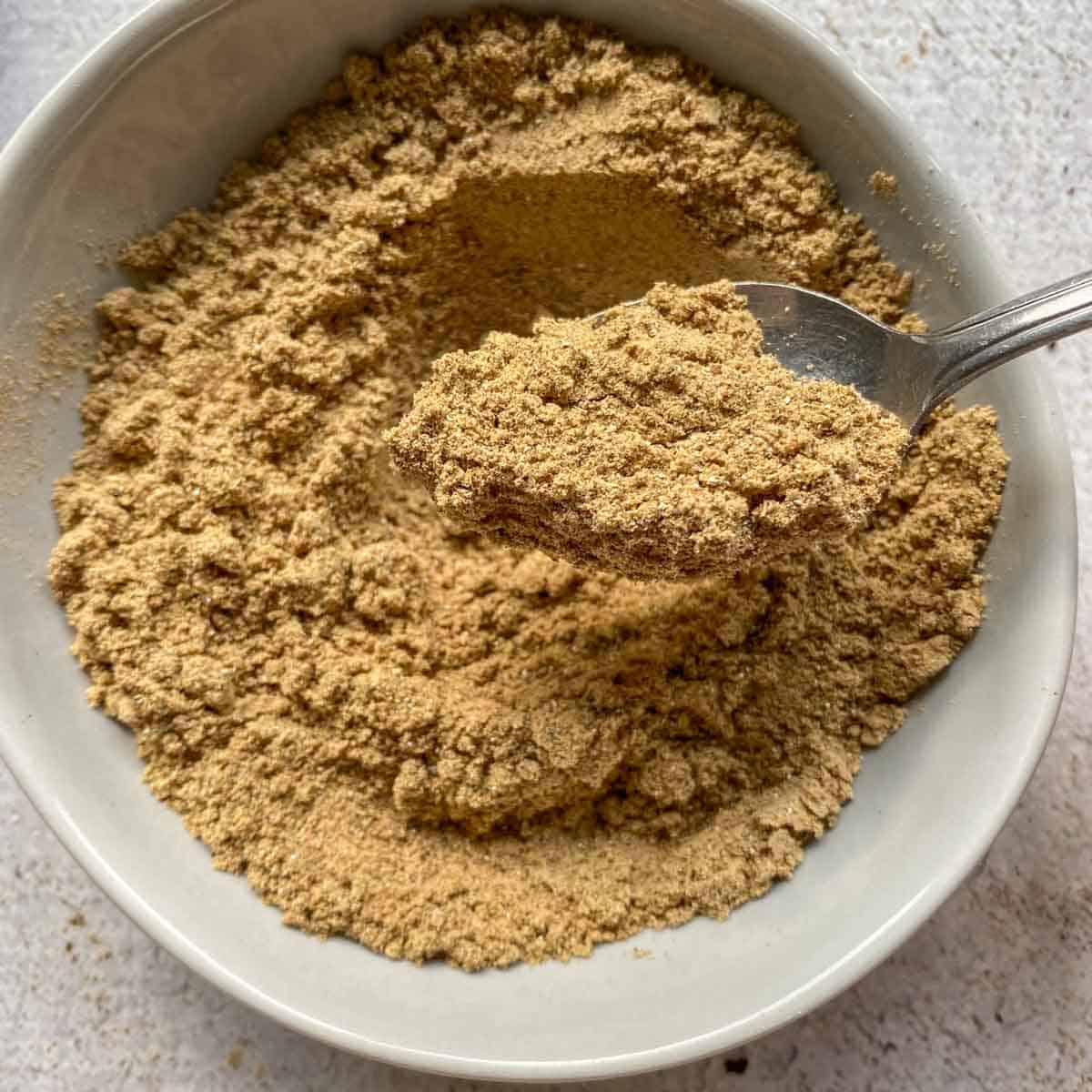
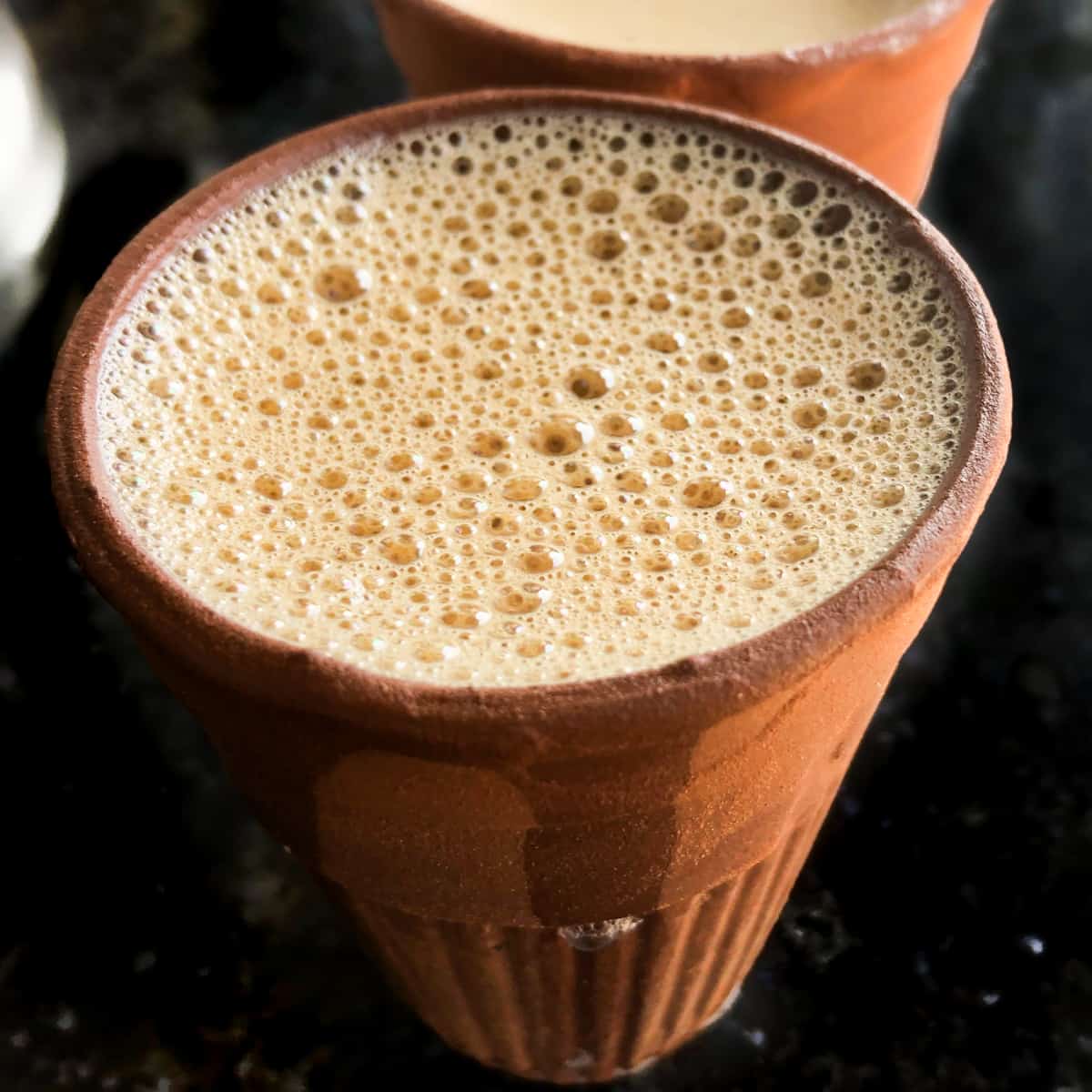
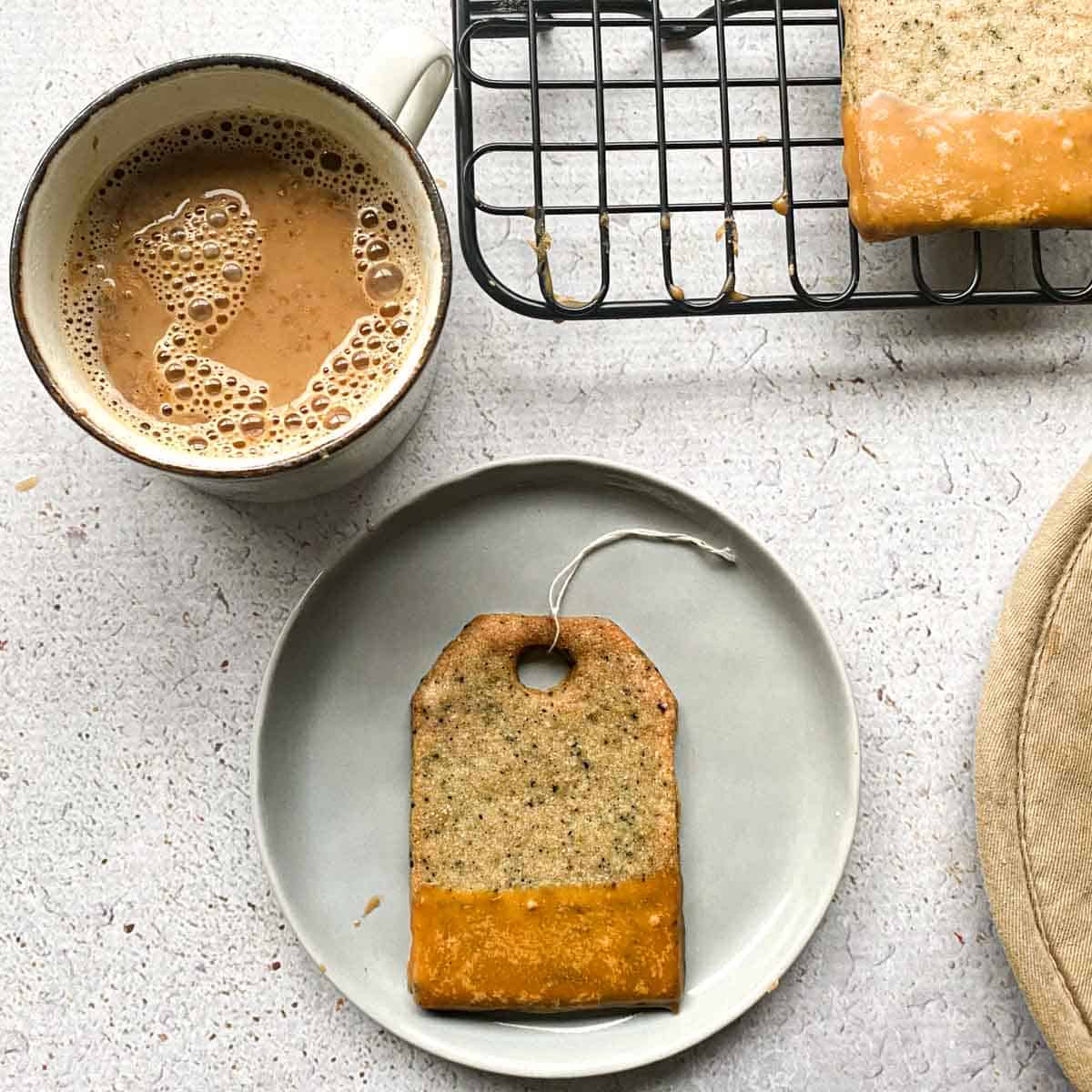
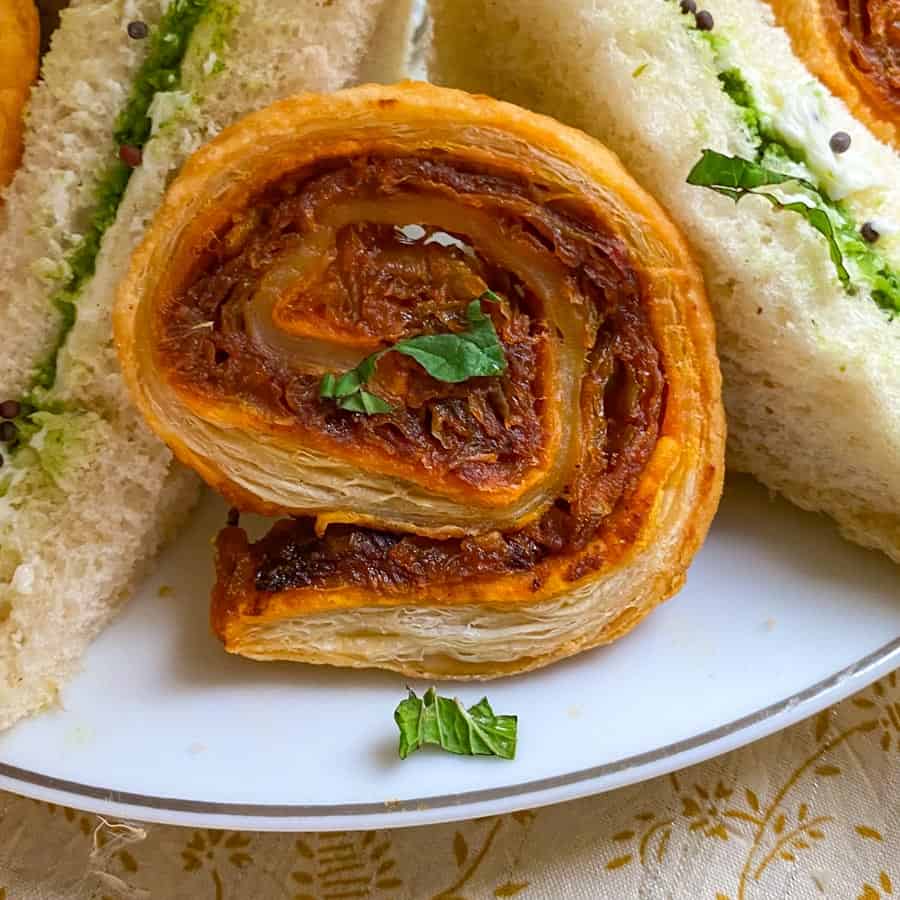
Shri Repp says
Soothing chai for the throat.
Monica says
I've always wanted to make chai at home and have used various premade powder mixes from the grocery store and they've always been sooo unsatisfying. I followed this recipe and specifically went to a small asian grocer for CTC tea. I then used soy milk and the powdered ginger substitute recommendations and it turned out really nice! The flavors blended so well together when I followed this recipe. Would definitely recommend and I can't wait to make some more for tomorrow morning!
Stephanie says
Super interesting to learn about the ginger milk curdling enzyme! Love the instruction! Fresh ginger all the way for me!
Shri Repp says
It makes me so happy to hear that you loved reading the science 🙂